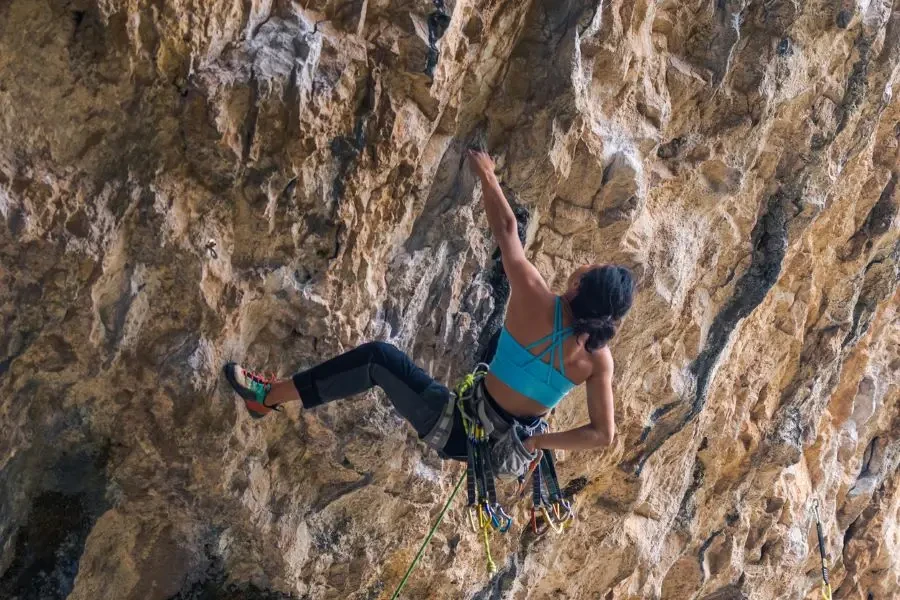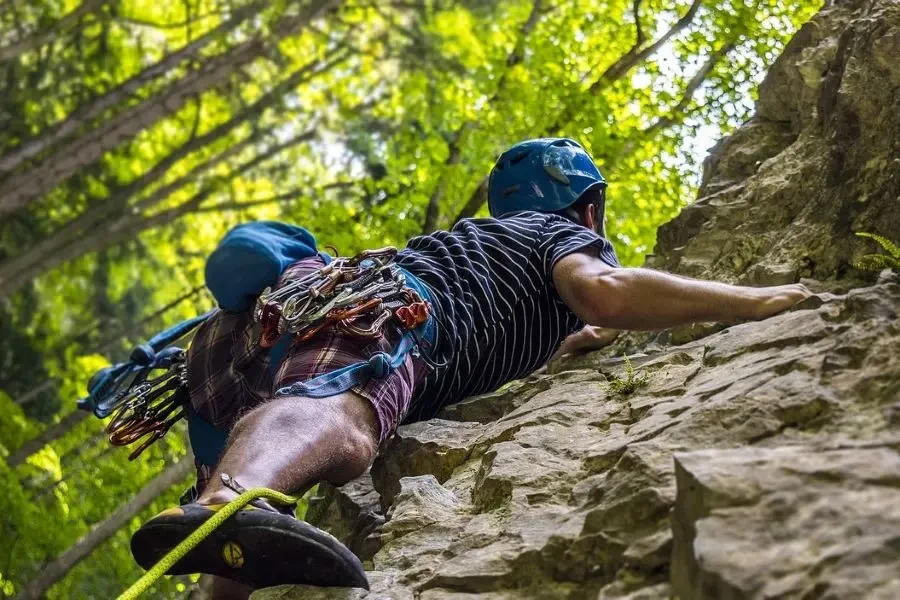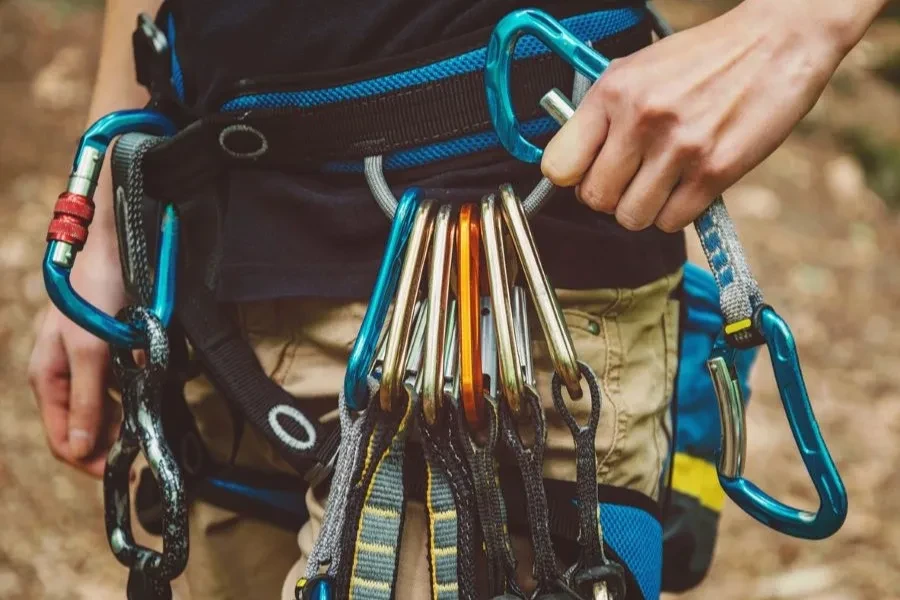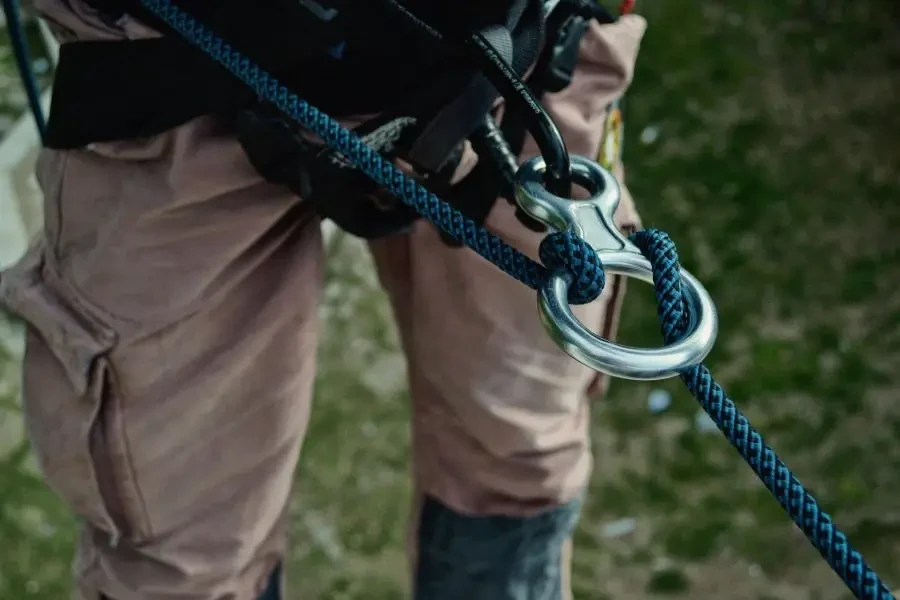Rock climbing has evolved from a niche sport to a mainstream activity, attracting enthusiasts from all walks of life. This surge in popularity has led to significant advancements in climbing gear, making the sport safer and more accessible. In this article, we delve into the market trends, key players, and regional preferences shaping the rock climbing gear industry.
Table of Contents:
Market Overview of Rock Climbing Gear
Advanced Materials and Textures in Rock Climbing Gear
Design and Functionality: Meeting Climbers’ Needs
Safety and Technological Features in Modern Climbing Gear
Market Overview of Rock Climbing Gear

Growing Popularity of Rock Climbing
Rock climbing has seen a remarkable increase in popularity over the past decade. According to the Outdoor Industry Association, the number of outdoor recreation participants surged by 2.3% in 2022, reaching a record high of 168.1 million individuals. This growth is driven by a combination of factors, including the rise of indoor climbing gyms, the inclusion of climbing in the Olympics, and the growing appeal of adventure sports.
Key Market Players and Innovations
The rock climbing gear market is highly competitive, with several key players leading the charge in innovation and quality. Companies like Black Diamond Equipment, Petzl, and The North Face are at the forefront, continuously pushing the boundaries of what climbing gear can achieve. According to Research and Markets, the Women’s Rock Climbing Clothing Market alone was estimated at USD 520.61 million in 2023 and is expected to grow at a CAGR of 7.86% to reach USD 884.56 million by 2030. This growth is indicative of the broader trend in the climbing gear market, where innovation and quality are paramount.
Regional Market Trends and Preferences
The demand for rock climbing gear varies significantly across different regions. In North America, the market is driven by a strong culture of outdoor recreation and a high number of climbing gyms. Europe, particularly countries like France and Germany, also shows robust demand, fueled by a rich tradition of mountaineering and climbing. In the Asia-Pacific region, countries like China and Japan are emerging as significant markets, driven by increasing disposable incomes and a growing interest in adventure sports.
According to Research and Markets, the Asia-Pacific region is expected to see the fastest growth in the fall protection equipment market, which includes climbing gear, with a CAGR of 9.22% from 2023 to 2028. This growth is supported by rapid urbanization and rising investments in infrastructure development projects, which are creating new opportunities for the climbing gear market.
Advanced Materials and Textures in Rock Climbing Gear

High-Performance Fabrics and Their Benefits
The evolution of rock climbing gear has been significantly influenced by advancements in high-performance fabrics. These materials are designed to enhance the climber’s experience by providing superior comfort, durability, and functionality. For instance, many modern climbing harnesses now incorporate split-webbing technology, which distributes weight more evenly across the harness, reducing pressure points and increasing comfort during prolonged use. This technology is particularly beneficial for trad and alpine climbers who often spend extended periods in their harnesses.
High-performance fabrics such as those used in the Black Diamond Technician and Petzl Adjama harnesses offer a blend of durability and comfort. These materials are not only robust enough to withstand the rigors of climbing but also flexible enough to allow for a full range of motion. Additionally, the use of foam padding in harnesses like the Black Diamond Momentum provides extra cushioning, making them ideal for beginners and those who prioritize comfort.
Textures for Enhanced Grip and Comfort
Textures play a crucial role in the design of climbing gear, particularly in enhancing grip and comfort. The surface texture of climbing shoes, for example, can significantly impact a climber’s ability to maintain traction on various rock surfaces. Shoes like the Scarpa Veloce and Evolv Defy are designed with specific rubber compounds that offer excellent grip on both indoor and outdoor climbing surfaces. The texture of these rubbers is engineered to provide maximum friction, which is essential for maintaining stability on steep and challenging routes.
In addition to shoes, the texture of harnesses and other gear components also contributes to overall comfort and performance. Harnesses with textured waist belts and leg loops help to prevent slipping and ensure a secure fit. This is particularly important during dynamic movements and when hanging for extended periods.
Innovations in Lightweight and Durable Materials
The quest for lightweight yet durable materials has led to significant innovations in rock climbing gear. Modern harnesses, for instance, often utilize advanced materials like Dyneema and high-strength nylon, which offer exceptional strength-to-weight ratios. These materials are not only lightweight but also highly resistant to abrasion and wear, making them ideal for the demanding conditions of rock climbing.
One notable example is the Black Diamond Solution harness, which features a combination of split-webbing and high-strength materials to provide a lightweight yet robust design. This harness is particularly popular among sport climbers who require minimal weight and maximum freedom of movement. Similarly, the Petzl Sitta harness incorporates advanced materials to achieve a streamlined and durable design, making it a top choice for performance-oriented climbers.
Design and Functionality: Meeting Climbers’ Needs

Ergonomic Designs for Maximum Efficiency
Ergonomic design is a key consideration in the development of climbing gear, as it directly impacts a climber’s efficiency and comfort. Harnesses like the Black Diamond Technician and Petzl Adjama are designed with wide waist belts and leg loops to distribute weight evenly and reduce pressure points. This ergonomic approach ensures that climbers can maintain comfort and efficiency during long climbs and hanging belays.
Moreover, the integration of adjustable leg loops in harnesses provides a customizable fit, allowing climbers to adjust their gear for optimal comfort and performance. This feature is particularly beneficial for alpine climbers who need to adapt their harnesses to different layers of clothing and varying conditions.
Multi-functional Gear for Versatile Use
Versatility is another important aspect of modern climbing gear design. Multi-functional gear allows climbers to use the same equipment across different climbing disciplines, reducing the need for multiple specialized items. For example, the Black Diamond Momentum harness is suitable for both indoor and outdoor climbing, making it a versatile choice for beginners and recreational climbers.
Additionally, harnesses designed for trad and alpine climbing, such as the Petzl Luna, often include features like large gear loops and haul loops, which provide ample space for carrying essential equipment. This versatility ensures that climbers are well-equipped for a variety of climbing scenarios, from single-pitch sport routes to multi-pitch trad climbs.
Customization Options for Personalized Fit
Customization options are increasingly becoming a standard feature in climbing gear, allowing climbers to achieve a personalized fit that enhances comfort and performance. Adjustable leg loops enable climbers to fine-tune their gear to match their body shape and clothing layers. This level of customization is particularly important for climbers who face varying conditions and need to adjust their gear accordingly.
Furthermore, some harnesses offer interchangeable components, such as different sizes of waist belts and leg loops, to provide a tailored fit. This customization ensures that climbers can achieve the best possible fit, reducing the risk of discomfort and enhancing overall performance.
Safety and Technological Features in Modern Climbing Gear

Cutting-Edge Safety Mechanisms
Safety is paramount in rock climbing, and modern gear incorporates cutting-edge mechanisms to ensure climbers’ protection. Harnesses like the Black Diamond Long Haul and Metolius Safe Tech Waldo are designed with multiple safety features, including load-bearing haul loops and dual belay loops. These features provide added security and versatility, making them ideal for big wall climbing where safety is critical.
Additionally, the integration of advanced safety mechanisms in belay devices, such as the Petzl Grigri, enhances climbers’ safety during belaying and rappelling. The Grigri’s assisted braking system automatically locks the rope in the event of a fall, providing an extra layer of protection for climbers.
Integration of Technology for Enhanced Performance
The integration of technology in climbing gear has led to significant improvements in performance and safety. For example, the Petzl Grigri+ features an anti-panic handle brake that stops the climber’s descent if the belayer pulls too hard on the lever. This technological innovation enhances safety and provides peace of mind for both climbers and belayers.
Moreover, advancements in materials science have led to the development of high-performance fabrics and components that enhance gear durability and functionality. The use of Dyneema and other high-strength materials in harnesses and ropes ensures that climbers can rely on their gear in the most demanding conditions.
Weather Resistance and Durability for Extreme Conditions
Climbing gear must be able to withstand extreme conditions, and modern designs prioritize weather resistance and durability. Harnesses like the Black Diamond Technician and Petzl Adjama are constructed with durable fabrics that resist abrasion and wear, ensuring longevity even in harsh environments. Additionally, the use of weather-resistant materials in climbing shoes, such as those found in the Scarpa Veloce, provides protection against the elements, allowing climbers to perform at their best regardless of the conditions.
Furthermore, the incorporation of weather-resistant coatings and treatments in ropes and other gear components enhances their durability and performance. These advancements ensure that climbers can rely on their equipment in a variety of environments, from wet and cold alpine routes to hot and dry desert climbs.
Conclusion
The advancements in rock climbing gear, from high-performance fabrics and ergonomic designs to cutting-edge safety mechanisms and technological integrations, have significantly enhanced the climbing experience. As the industry continues to innovate, climbers can look forward to even more advanced and versatile gear that meets their evolving needs. The future of rock climbing gear promises to bring even greater comfort, safety, and performance, enabling climbers to push their limits and explore new heights with confidence.




